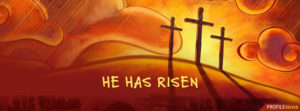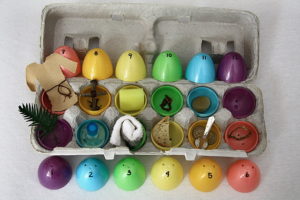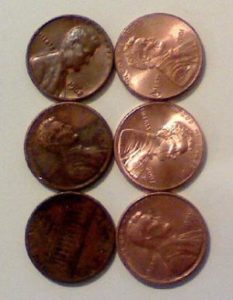
As my kids get older and are ready to learn more in depth about Jesus, I find myself scrambling to explain and worried that they don’t “get it.” Explaining Christmas is so much easier than Easter right?!? – babies, sheep, angels, stars. It’s pretty much all about love and presents: things your kids can relate to. Sure there’s the nasty part where Herod kills the baby boys, but that’s not an essential part of the story and you can leave it out if you want to.
Easter, on the other hand, is much tougher. You have the joy and celebration of Palm Sunday and the even bigger joy and celebration of Easter one week later. But in between, there is betrayal, denial, torture, pain, and death. How do you explain all this to children?
My first instinct is just to skip it, to go directly from Palm Sunday to Easter without that disturbing stop at the cross. As tempting as this option is, it is not the best choice for my girls. We can’t experience the real joy of Easter without first reflecting on the pain and sadness of Good Friday. If we skip over the cross, our children are going to approach Easter with a “So what’s all the fuss about, anyway?” attitude.
This is not to say that we should run out and rent The Passion for our kids to watch. However, there are many age-appropriate ideas, Easter books, and videos you can use as a starting point for sharing Easter faith with our kiddos. Preview the books and videos first to make sure they
- Match your beliefs
- Are not too violent
- Include Jesus’ resurrection as well as his death
I never want to tell the story of Jesus’ death without also telling about his resurrection.
Here are some other activities I found online that you can use to explain Easter to your children (which I plan on making the resurrection eggs):
Make resurrection eggs
You can buy sets of resurrection eggs or you can make your own. To make your own, label 12 plastic eggs with the numbers 1-12 and fill them as below:
- Egg 1 – a piece of fur to represent the donkey Jesus rode into Jerusalem
- Egg 2 – a cracker symbolizing the Last Supper
- Egg 3 – a piece of soap, symbolizing Jesus washing the disciples’ feet
- Egg 4 – three dimes to symbolize the 30 pieces of silver Judas received to betray Jesus
- Egg 5 – a feather to represent the rooster that crowed three times
- Egg 6 – a thorn, symbolizing the crown of thorns that was put on Jesus’ head
- Egg 7 – a die to symbolize the lots that were cast for Jesus’ clothing
- Egg 8 – a small wooden cross or a nail to represent Jesus’ death on the cross
- Egg 9 – a piece of black paper to symbolize the darkness that covered the earth
- Egg 10 – a piece of cloth to symbolize the cloth in which Joseph wrapped Jesus’ body
- Egg 11 – a rock to symbolize the stone that sealed Jesus’ tomb
- Egg 12 – Leave this egg empty to symbolize Jesus’ resurrection
You can open one egg a day for the 12 days before Easter or open a couple eggs a week. It is extra meaningful if you can open Egg 12 on Easter. As you open the eggs, talk about what each item represents.

Clean pennies
Your children may have difficulties understanding that Jesus died for their sins. First of all, you may need to explain to them that sin is anything we do that keeps us from being friends with God. Bring out some grimy pennies and tell them the dirt on the pennies represents their sin. Then mix ¼ cup of white vinegar and 1 teaspoon of salt. Put the pennies in the vinegar mixture for about five minutes. They will come out shiny and clean! Explain that Jesus makes us shiny and clean too.

Answer questions honestly
Your children will ask you tough questions like “Why did Jesus have to die?” and “Why didn’t God help him?” Answer as best as you can – chances are you ask yourself these same questions sometimes! Admit that you don’t understand it all yourself, but explain as best you can that Jesus died for us because it was God’s plan. Such questions are a sign that your children are growing in faith and wanting to understand for themselves, not just accept what they have been told in Sunday School. Rejoice!
Keep the emphasis on Jesus
Easter morning can easily become more about candy-filled eggs than Jesus’ resurrection. Keep the focus on Jesus, with the Easter Bunny a very secondary character.
0 Comments